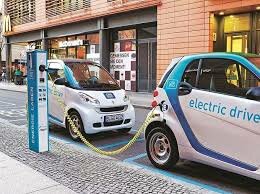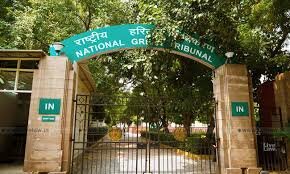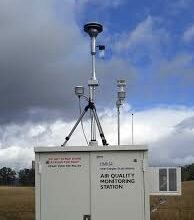E-vehicles set to revolutionize the Indian automobile sector as demand doubles in 3 years

New Delhi: India’s transition towards electric mobility offers the country not only an opportunity to improve efficiency & transform the automobile sector but also addresses concerns regarding energy security. These issues that the country is currently grappling with, can be addressed with the uptake of electric mobility. Consequently, the reduction in the Current Account Deficit (CAD) would be an additional benefit.
Therefore, as part of the National Electric Mobility Mission Plan (NEMMP), the first phase of the Fast Adoption & Manufacturing of Hybrid & E-vehicles Scheme (FAME) was launched in 2015 for the promotion of E-vehicles in India.
Thereafter, the demand for E-vehicles hailed as the ‘future of mobility’ has more than doubled in a period of 3 years from 69,012 E-vehicles sold in 2017 to 167,041 in 2020.
India is committed to reducing the carbon footprint levels by 33-35 percent by 2030 as part of its NDCs under the Paris Agreement and has taken viable steps in this regard.
In a statement laid by Union Road Transport & Highways Minister Nitin Gadkari in Lok Sabha on the ‘vehicle scrappage policy’, private vehicles not having a fitness certificate will be de-registered in 20 years & commercial vehicles in 15 years.
The move is taken by the government primarily to reduce carbon emissions and boost the automobile manufacturing sector. This will also give a much-needed boost to the demand for E-vehicles in the near future.
Countries across the world are putting their best efforts to reduce dependency on fossil fuels, thus gearing towards Sustainable Development.
As per the new report issued by the UN, nations need to cut down their fossil fuel production by 6% for the next decade in order to control temperature rise to 1.5 °C. Thus, EVs driven by clean ‘decarbonized clean energy’ can be a viable alternative to Internal Combustion Engine vehicles in reducing CO2 emissions.
Electricity is an eco-friendly source of energy as compared to gasoline. In line with this, the government took measures to incentivize the growth in the demand for E-vehicles. For this, 5% GST on EVs; an exemption in income tax and road tax on buying EVs, and other such measures are undertaken by the government.
EVs are anticipated to constitute a sizeable percentage of India’s vehicular mix in the future. Efforts have been made to reduce EV battery costs in recent years, making electric cars steadily more affordable.
All major automobile players either already have or are gearing to have EV models in the pipeline, since the future of automobiles in the next couple of years, for India is ‘electric’.
Energy Efficiency of E-vehicles: Where conventional gasoline vehicles convert 12-30% of the energy stored in gasoline to power at the wheels, EVs convert more than 77% of electrical energy from the grid to power at the wheels. E-vehicles are eco-friendly and don’t emit hazardous pollutants into the air, as ICE vehicles do. Further, with ideation underway for the use of alternative fuels and renewable energy to run E-vehicles, it is all set to revolutionize the Indian automobile sector.
Performance benefits: The motor used for E-vehicles provides quiet and smooth operation & stronger acceleration. It also requires less maintenance than ICE vehicles and does not cause pollution.
Anticipated roadblocks in the E-vehicle journey:
Cost: The initial/one-time cost of EVs is higher in comparison to ICE vehicles. The cost of batteries used in EVs too is relatively expensive, which is anticipated as a hindrance to its demand in comparison to other vehicles.
Infrastructure: For making India an EV Hub, infrastructure like EV charging stations, adequate electricity, and raw materials would be required. Thus, alternate sources of fuel have also been searched upon. However, without adequate infrastructure, it will be highly difficult for EVs to rein for long.
The communication between the battery & the charger and between the charger & the grid in an EV ecosystem is essential for the safety and reliability of both the vehicle and the grid. Therefore smart charging infrastructure, as well as adequate electricity infrastructure, is needed to supply power at the required rate.
Alternate Fuels in consideration to level-up the E-vehicle game:
To advance their research in Electric vehicles, Scientists and professors are trying to find alternate fuels for E-vehicles to meet better cost, availability, infrastructure, and profitability criteria.
Ethanol: It is a widely used renewable fuel made from corn and other plant materials. It is blended with gasoline for use in vehicles.
Hydrogen: It is a potentially emissions-free alternative fuel that can be produced from domestic resources for use in fuel cell vehicles.
Propane: It is a readily available gaseous fuel that has been widely used in vehicles throughout the world for decades.
Biodiesel: It is a renewable fuel that can be manufactured from vegetable oils, animal fats, or recycled cooking grease for use in diesel vehicles.
Key Players in the Indian E-vehicle market:
1.) Tata Motors Ltd.
2.) Mahindra & Mahindra Ltd.
3.) MG Motor India
4.) Olectra Greentech Ltd.
5.) JBM Auto Ltd.
The E-vehicle market of India is anticipated to register a Compound Annual Growth Rate (CAGR) of 20% until 2025. It is still at a nascent stage in India and the government is leaving no stone unturned to promote EV in the country. It is expected to grow at a revolutionary rate with an ambitious target of becoming an all-EV nation by 2030.
(PBNS)





